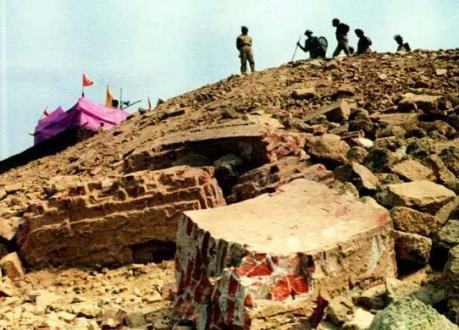
 It is well-established by GPRS-directed excavations done under the Allahabad High Court monitoring and verification in 2002-03, that a large temple did exist below where Babri Masjid structure once stood. – Dr Subramanian Swamy
It is well-established by GPRS-directed excavations done under the Allahabad High Court monitoring and verification in 2002-03, that a large temple did exist below where Babri Masjid structure once stood. – Dr Subramanian Swamy
True and devout Hindus believe Lord Sri Rama was born in Ayodhya, the then capital of a flourishing kingdom of the Suryavansha dynasty. Rama is venerated as Maryada Purushottam, and worshipped by Hindus of the north. As an avatar of Vishnu, he was first propagated by Tamil saints Nayanmars and Alwars; the north later came to accept Rama, especially thanks to the saint Tulsidas. In that sense, Sri Rama was the first truly national king of India, supra region, supra varna or jati.
The exact spot where Rama was born has been and remains firmly identified in the Hindu mind and is held as sacred. This is the very area where stood from 1528 till December 6, 1992, a structure that came to be known as Babri Masjid, put up in 1528 by Babur’s commander Mir Baqi.
Baqi was a Shia Muslim, and hence he intended it to be a place for Shias to perform namaz. Today, interestingly, the Shia clerics have made it clear to Hindu organisations that they would agree to have the site restored as a Ramjanmabhoomi. It is the Sunni Waqf Board, which entered the legal dispute as late as 1961, that has been claiming the title to the land on which the structure once stood. I call it a “structure” since it cannot be strictly called a mosque by Sunni edicts—because it did not have the mandatory minarets and wazu (water pool).
In Skanda Purana (Chapter X, Vaishnav Khand) the site is vividly described. ValmikiRamayana also describes it beautifully. Less than two decades before Mir Baqi carried out the horrible demolition of the Ram Temple, Guru Nanak had visited the Ramjanmabhoomi and had darshan of Ramlalla in the mandir at the spot. Guru Nanak himself records in 1521 the barbarity of Babar’s invasions (in Guru Granth Sahib at p.418). In Akbar’s time, Abul Fazal wrote the Ain-i-Akbari in which he describes Ayodhya as the place of “Ram Chandra’s residence who in Treta Yuga combined spiritual supremacy and kingship” (Translated by Colonel H. S. Jarrett and published in Kolkata in 1891).
In Chapter X of the Report of the Archeological Survey of India, NW, and Oudh (1889) it is mentioned (p.67) that Babri Mosque “was built in AD 1528 by Mir Khan on the very spot where the old temple of Janmasthan of Ram Chandra was standing.”
It is recorded in many official and judicial proceedings. In 1885, for example, Mahant Raghubar Das in a Suit No 61/280 of 1885 filed in the court of the Faizabad sub-judge against the Secretary of State for India (who was based in London), prayed for permission to build a temple on the chabutra outside the mosque. His suit was dismissed on March 18, 1886.
However, in his order, the sub-judge, an Englishman, stated: “It is most unfortunate that a Masjid should have been built on land specially held sacred by the Hindus. But as the event occurred 358 years ago, it is too late now to remedy the grievance.”
It is well-established by GPRS-directed excavations done under the Allahabad High Court monitoring and verification in 2002-03, that a large temple did exist below where Babri Masjid structure once stood. Inscriptions found during excavations describe it as a temple of Vishnu Hari who had killed the demon king Dasanan (Ravana).
The Sunni Waqf Board does not accept these findings. It does not however matter if all this was indeed so or not, since under Section 295 of the Indian Penal Code (IPC) it is prescribed that “Whoever destroys, damages or defiles any place of worship, or any object held sacred by any class of persons, with the intention of thereby insulting the religion of any class of persons or with the knowledge that any class of persons is likely to consider such destruction, damage or defilement as an insult to their religion, shall be punishable with imprisonment of either description for a term which may extend to two years, or with fine, or with both.” – The New Indian Express, 3 October 2010
Source: https://bharatabharati.wordpress.com/2017/04/13/fundamentals-of-the-sri-ram-temple-at-ayodhya-subramanian-swamy/







